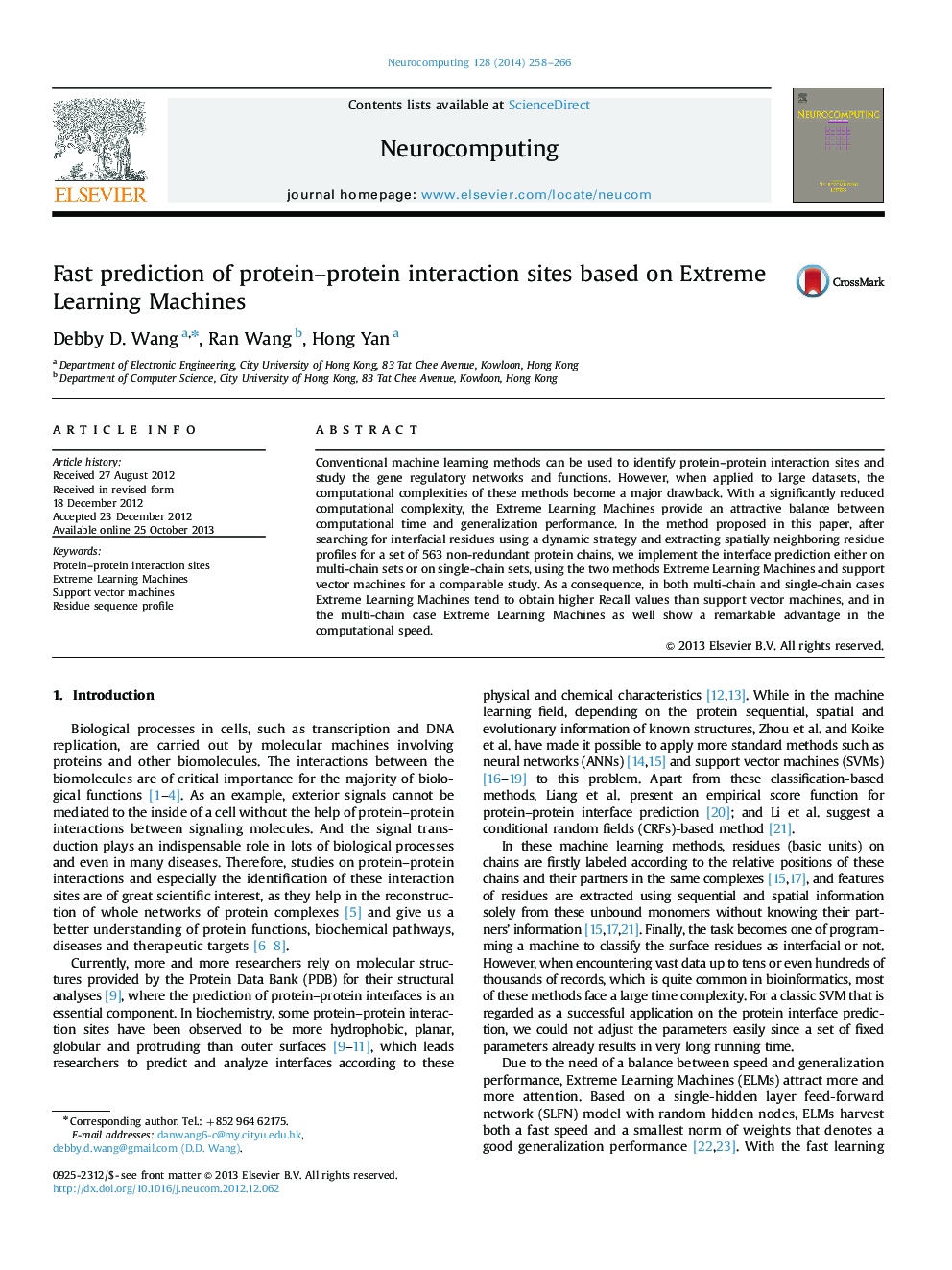| Article ID | Journal | Published Year | Pages | File Type |
|---|---|---|---|---|
| 408152 | Neurocomputing | 2014 | 9 Pages |
Conventional machine learning methods can be used to identify protein–protein interaction sites and study the gene regulatory networks and functions. However, when applied to large datasets, the computational complexities of these methods become a major drawback. With a significantly reduced computational complexity, the Extreme Learning Machines provide an attractive balance between computational time and generalization performance. In the method proposed in this paper, after searching for interfacial residues using a dynamic strategy and extracting spatially neighboring residue profiles for a set of 563 non-redundant protein chains, we implement the interface prediction either on multi-chain sets or on single-chain sets, using the two methods Extreme Learning Machines and support vector machines for a comparable study. As a consequence, in both multi-chain and single-chain cases Extreme Learning Machines tend to obtain higher Recall values than support vector machines, and in the multi-chain case Extreme Learning Machines as well show a remarkable advantage in the computational speed.
